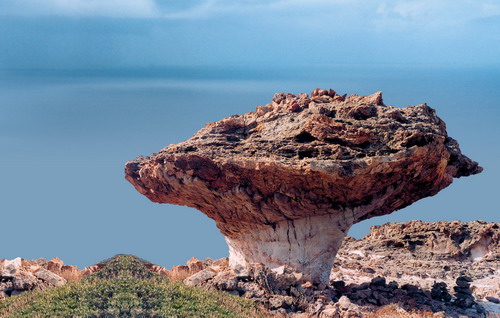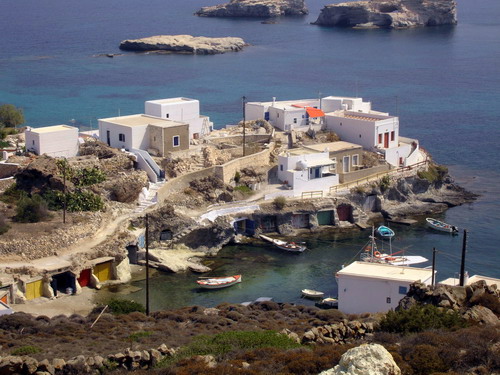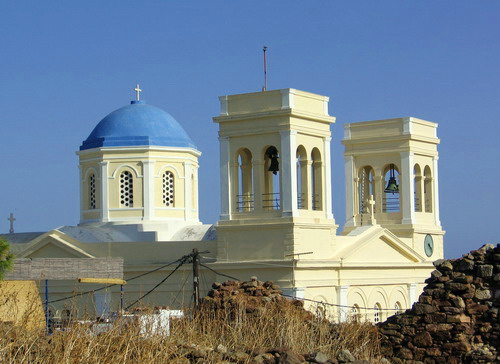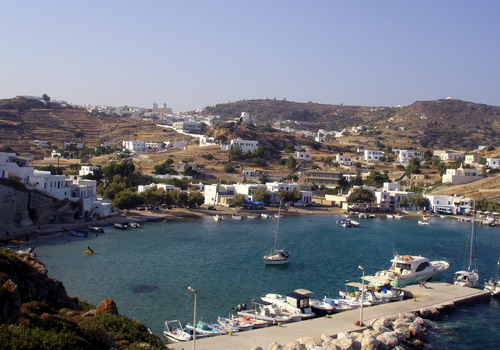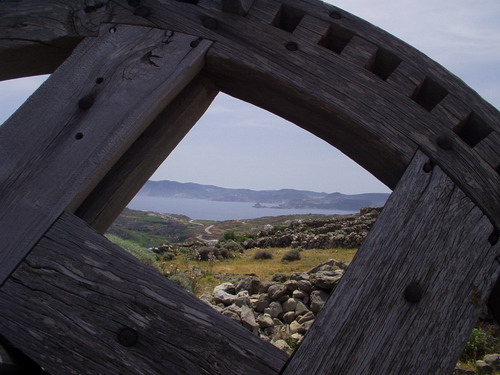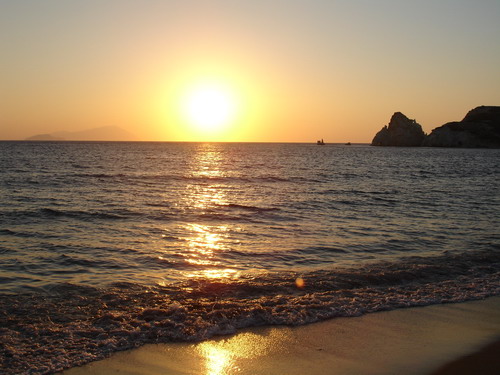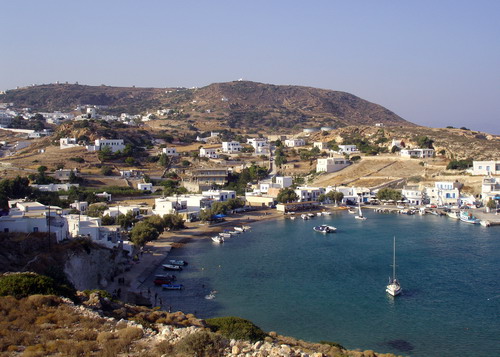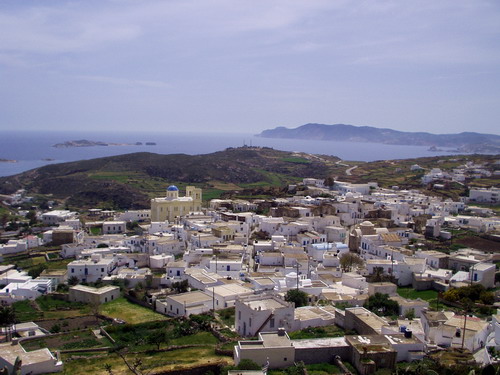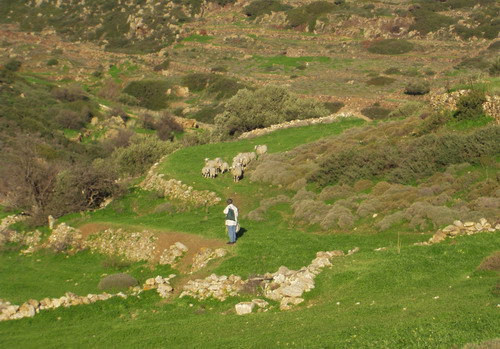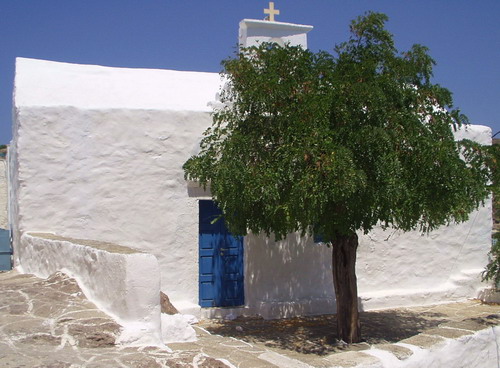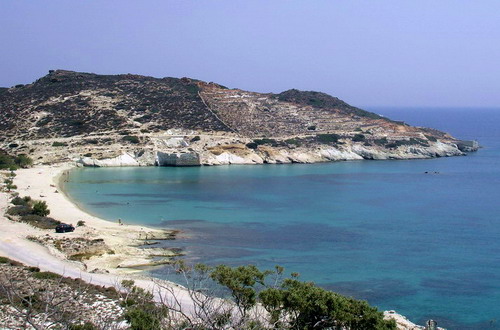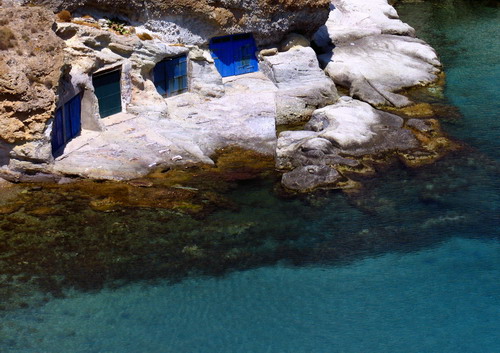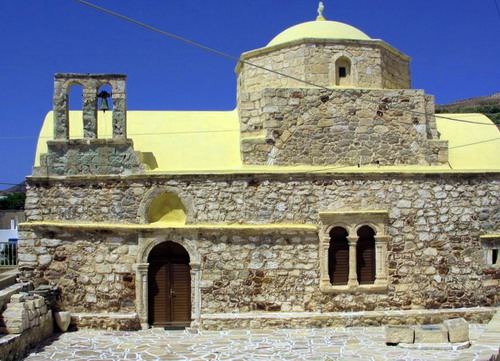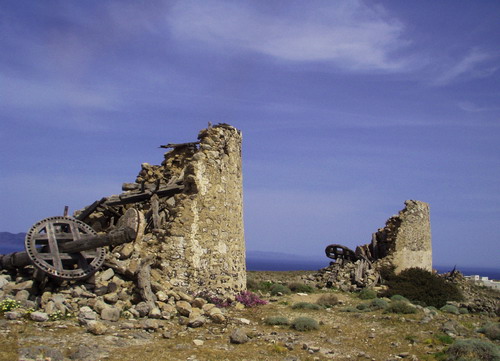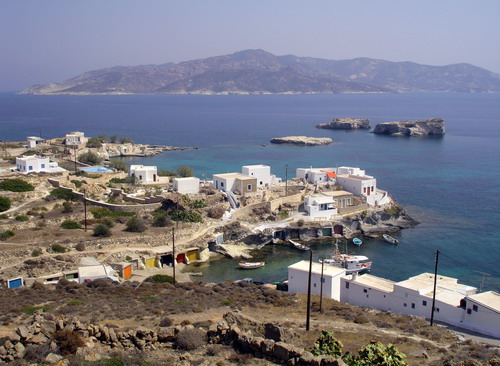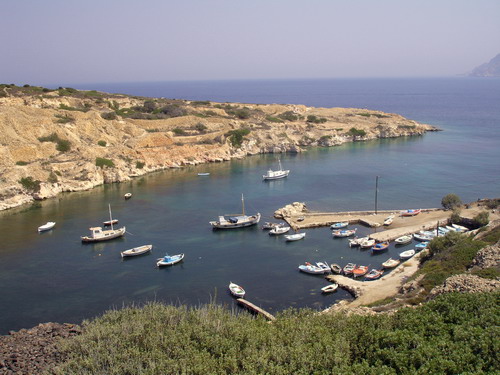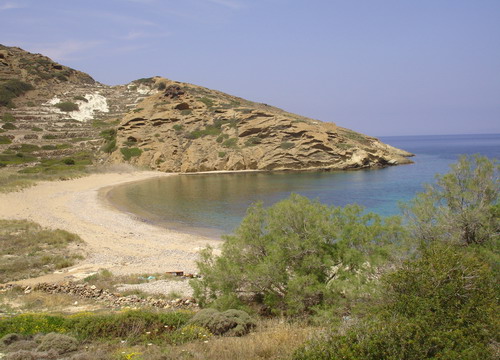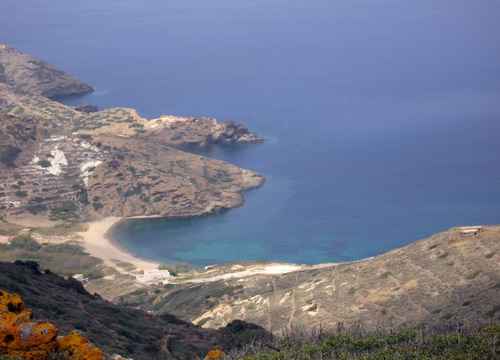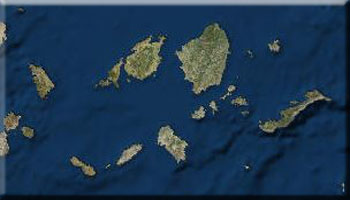Kimolos, in the southwestern Cyclades, is 87 nautical miles from Piraeus and lies just off Milos. Access is by boat from Piraeus or by plane to Milos, then transfer by ferry or fishing boat.
Kimolos is a volcanic island and covers an area of 37 square kilometers and is noted for the remarkable variety of its chalk-colored soil layers that inspired its name (kimolia is Greek for chalk).
The island is famous for its flora and fauna as it's caves are a primary habitat for the Mediterranean monk seal, while the island has sizeable populations of a rare, endemic viper species (known locally as "lebetina"), the blue lizard, the shag, the golden owl, a rare hawk species, and many migratory birds.
According to mythology, the island was named by its first inhabitant, Kimolos. To the Venetians, the island was known as Argentiera, mostly likely from its silver-hued soil, while in medieval times it was known as Echinousa, that is, isle of the echidnae.
Now submerged, the ancient city was on the island's west at the present-day site of Hellenika. On the seabed near Ayios Andreas islet, off the coast at Hellenika, there are visible ruins of houses and graves. Roman and Byzantine pots found at the site suggest the ancient city was inhabited through Byzantine times.
Like the rest of the Cyclades, Kimolos was pillaged by pirates and fell under successive rulers. Yet at times it flourished. In 1207, the Venetian ruler Marco Sanudo united it with the Duchy of Naxos; later it came under Turkish rule and, following the Russo-Turkish war (1770-1774), it passed into Russian hands.
Kimolos gained independence from the Ottoman empire in 1828, when it joined the Modern Greek State.
Mesa Kastro and Exo Kastro, respectively inner and outer castle, at Horio offer fine examples of Aegean defensive architecture.
The Church of Christos, the oldest on the island, was built in 1592 by the priest Ioannis Ramfos.
The 15th-century icon of the Panayia created by the Paleologoses in the church of Panayia Odigitria, the island's cathedral.
The church of Ayios Ioannis Chrysostomos is an architectural gem of great historical and archaeological importance. It houses an 18th-century icon of Ayios Chrysostomos.
The Kimolos Museum boasts a fine collection of pots dating from the Geometric and Archaic eras.
Walking tours taking in a number of churches and chapels whose architecture is in perfect harmony with their setting.
- Alyki
- Bonatsa
- Kalamitsi
- Ai Georgis
- Leivadaki
- Klima
- Rema
- Psathi
- Soufi
- Monastiria
- Athinias Bay
- Kastro
- Pano Mersini
- Kato Mersini
- Almoura
- Tis Panayias to Avlaki
- Hellenika
- Asprogrema
August 15 - The Koimissis tis Theotokou (Dormition of the Virgin) is observed with an icon procession, followed by a folk feast with music and food.
"Cultural August" - A month-long program of theater, music, and other events organized by the Kimolos Society.
October 5 - Osia Methodia, a local nun who attained sainthood, is honored at Horio with an evening church service and procession of her relics, followed by a feast with live music and local food.
November 21 - The Eisodia tis Theotokou (Presentation of the Virgin), patron-saint of the island, is observed with an icon procession, followed by a folk feast with food and music.
| MUNICIPALITY OF KIMOLOS | 2287051218 |
| RURAL SURGERY | 2287051222 |
| POLICE STATION | 2287051205 |
| TAXI STATION | 6945464093 |
| PORT STATION | 2287051071 |









